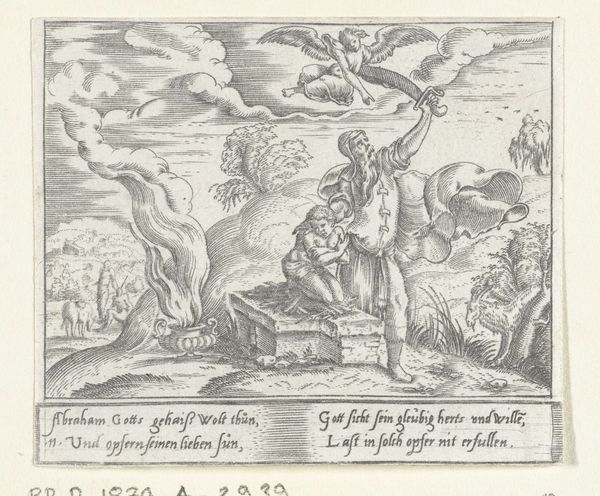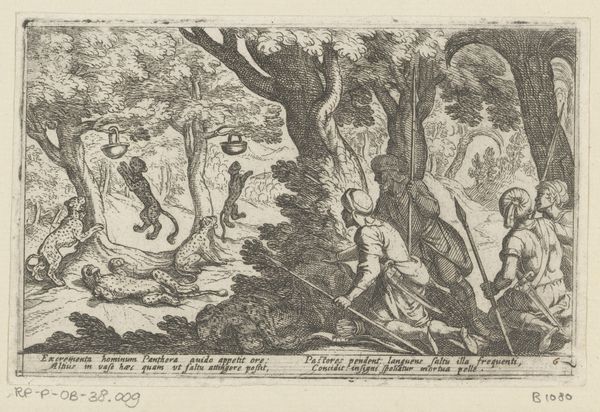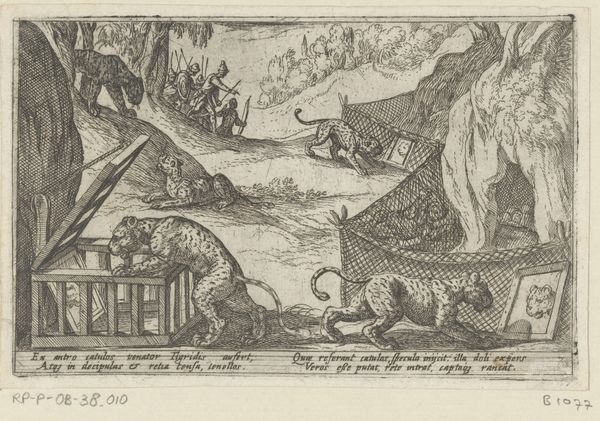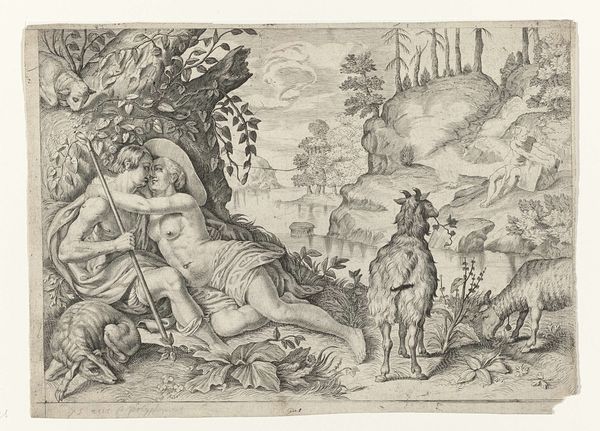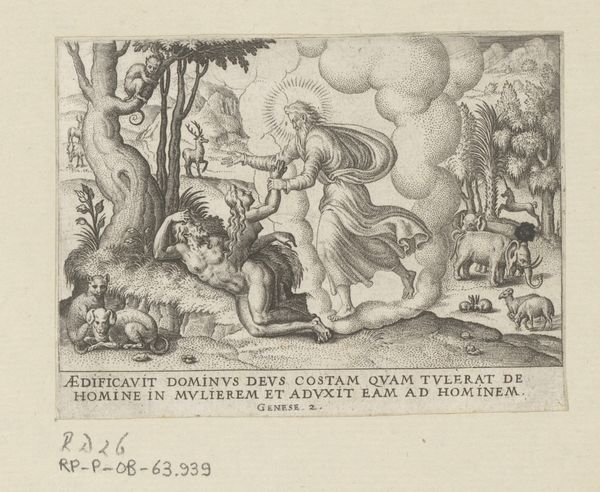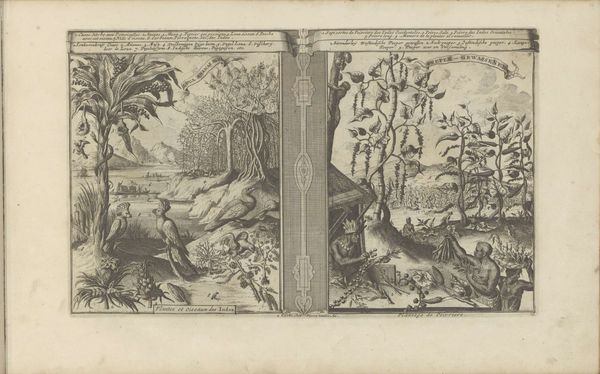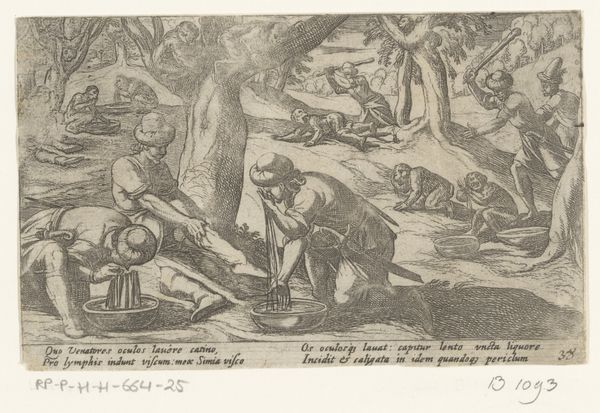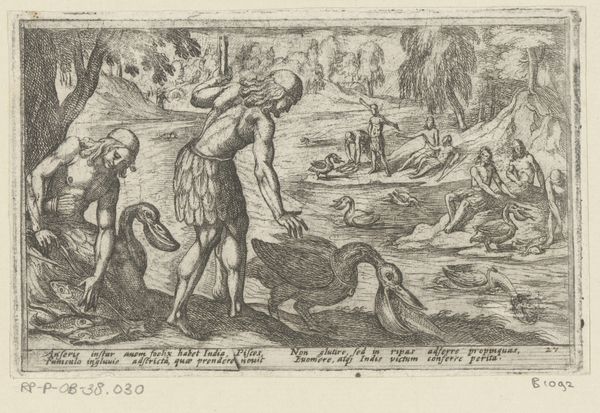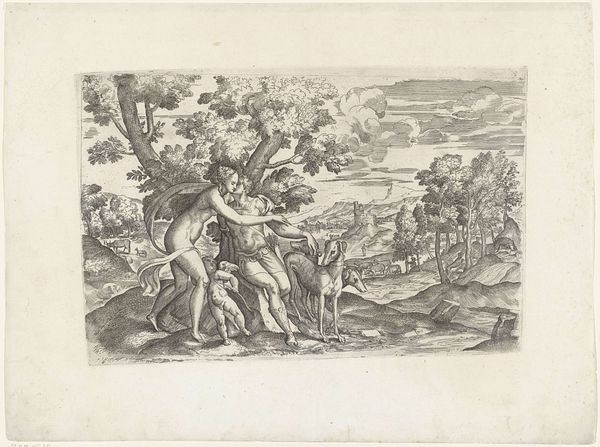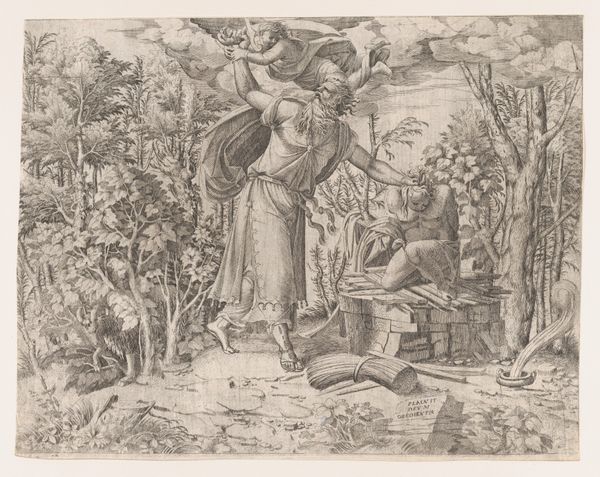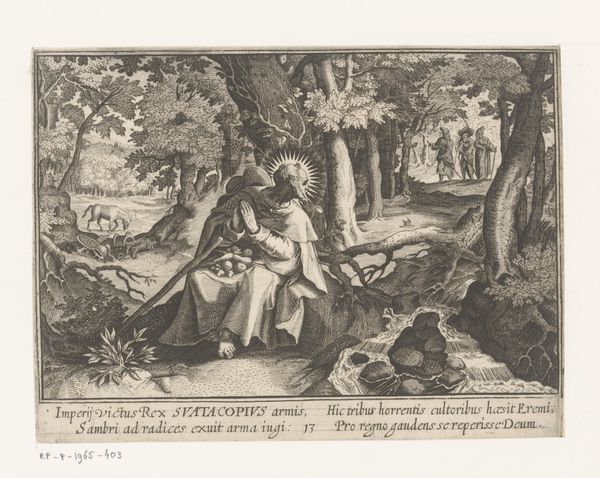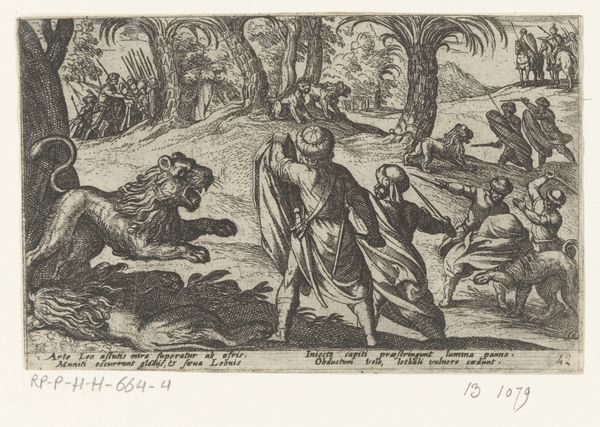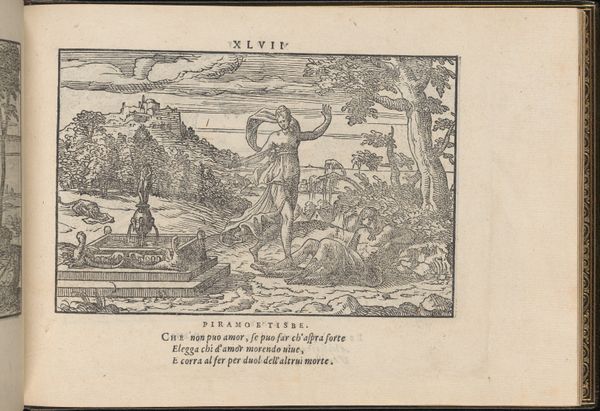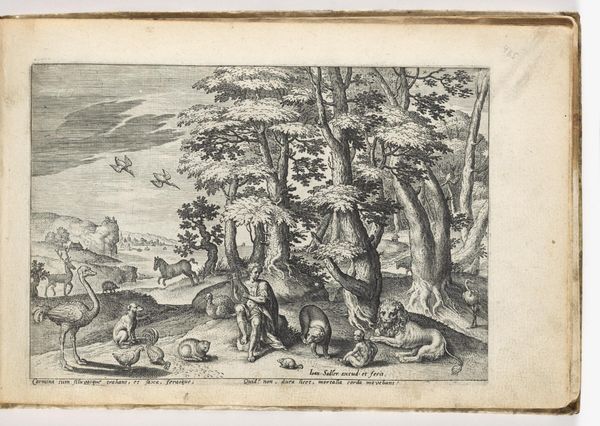
print, etching, engraving
#
narrative-art
# print
#
etching
#
old engraving style
#
sketch book
#
landscape
#
mannerism
#
figuration
#
history-painting
#
engraving
Dimensions: height 80 mm, width 103 mm
Copyright: Rijks Museum: Open Domain
Editor: This is "God vervloekt Kaïn," or "God Curses Cain," an etching by Etienne Delaune made after 1569, here at the Rijksmuseum. I'm struck by how detailed the landscape is, contrasting with the figures, which seem more symbolic. How would you interpret the overall composition of this piece? Curator: The composition reveals a structured approach to the narrative. Delaune employs contrasting textures and forms to guide the viewer’s eye. Consider the swirling clouds, juxtaposed with the dense, linear forest. The figures, though smaller in scale, are rendered with a precision that draws attention to their placement within the landscape. It's not simply illustration, but an arrangement of formal elements contributing to the narrative's impact. Notice how the horizon line and the clusters of trees compartmentalize each of the successive phases within the narrative of Cain and Abel's exile. Editor: So you're saying the placement isn't arbitrary but carefully constructed to tell the story through visual cues? Curator: Precisely. The figures are positioned to convey not only the narrative elements but also the emotional weight. Can you identify how the artist uses line and form to differentiate God, Adam and Eve, Abel, and Cain? Observe also the inscription across the page of the print, "dixit Dominus ad Cain," referring to the literal narrative scene, where God addresses and curses Cain, and its relation to the artist's arrangement of the composition. Editor: Well, God appears separate, elevated in the clouds, while Cain seems isolated and overwhelmed, his body turned away. The sharp lines defining him certainly give off the impression of someone in distress! Curator: Indeed. Consider also the stark contrast between the meticulously rendered landscape and the relatively simpler rendering of the sheep. It forces us to ask, "Why that contrast?" Could the choice reflect a commentary on Cain's perception of the natural world versus his own actions? Editor: I never thought of it that way, but that’s fascinating. Looking at the piece as a whole and considering the artist's use of form really opens up new ways of seeing the narrative. Curator: Absolutely. It's about recognizing how the artist employs formal tools to construct meaning, inviting a richer, more nuanced engagement with the subject matter.
Comments
No comments
Be the first to comment and join the conversation on the ultimate creative platform.
